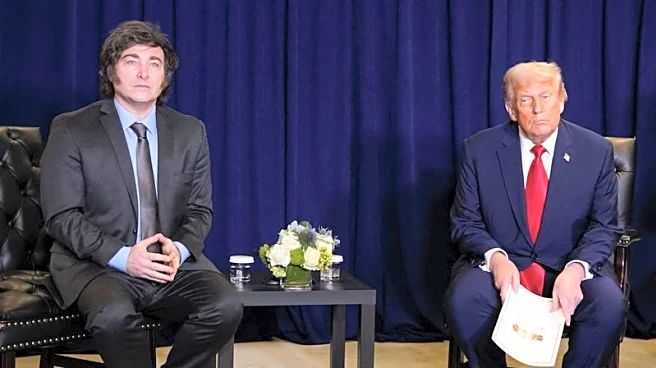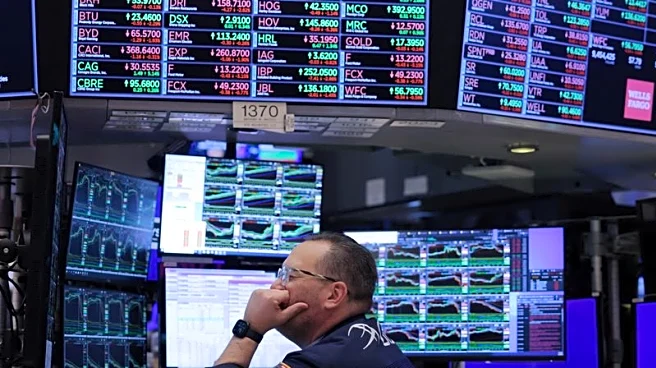What's Happening?
The U.S. Treasury Department has extended a $20 billion currency swap line to Argentina's central bank, exchanging stable U.S. dollars for volatile pesos. This intervention aims to prevent a financial crisis in Argentina that could impact U.S. markets. The move comes amid liquidity concerns in Argentina, which faces key midterm elections. The swap line is intended to stabilize Argentina's financial situation and halt a negative feedback loop threatening the country's economic stability. The immediate market reaction saw the peso appreciate against the dollar, although concerns remain about the long-term effectiveness of the bailout.
Why It's Important?
The U.S. intervention is significant as it marks the first of its kind since the 1995 rescue of Mexico. While Argentina poses little systemic risk, the potential for capital flight and market volatility justified the bailout. The move underscores the U.S.'s commitment to maintaining global financial stability and supporting allies in the region. The bailout also has political implications, as it supports President Javier Milei's government, an important ally for the U.S. in Latin America. The intervention reflects Washington's efforts to keep credit markets calm amid global growth concerns and election-year uncertainty.
What's Next?
The upcoming elections in Argentina will determine the future of President Milei's government, which has been supported by the U.S. bailout. The administration must leverage its political capital to capitalize on the opportunity provided by the swap line. The long-term impact of the bailout on Argentina's economy and its relationship with the U.S. remains to be seen, with potential risks of devaluation after the elections.












